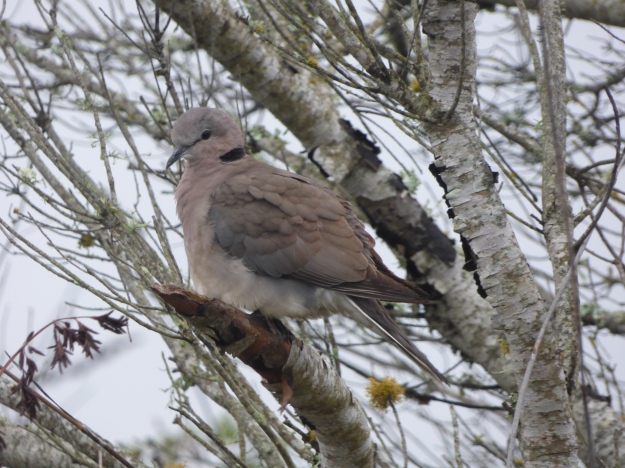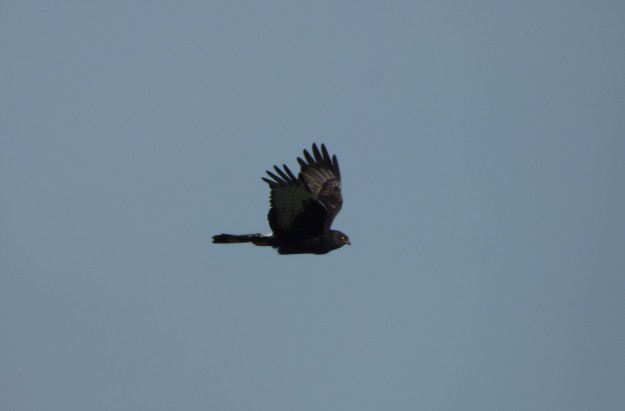Cape Town 2019 Birding Tour. Trip Report
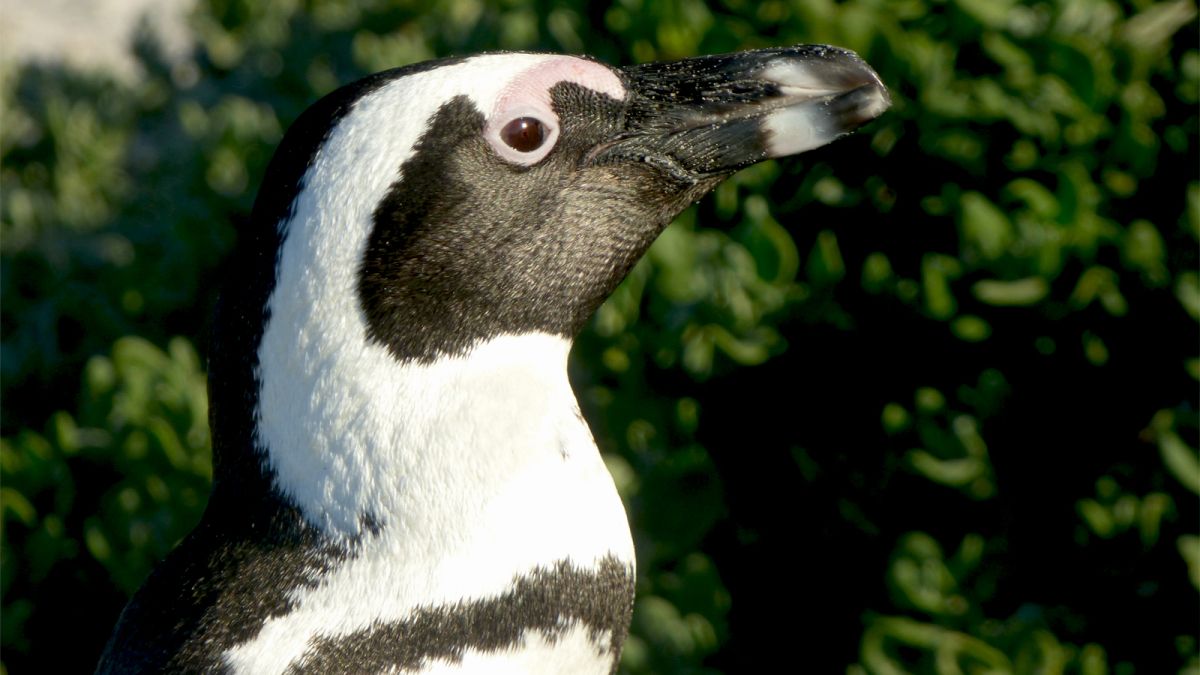
Start Date: August 15th, 2019
Number of species seen: 247
Group size: 4
All images by Carles Oliver
Day 1. During August 14th the tour participants arrived to Cape Town. The lovely accommodation where we were hosted welcomed them or organised a transport from the airport, and we all met in the next morning, when an early start was mandatory to catch up with our boat. Yes, today was offshore day! So, before raising we all met, and drove the short distance to the harbour. Our small boat was there waiting for us and during the short chating with our experienced captain we really saw the firsts birds of the tour. Harbault’s Gulls were really common, and the harbour had some Kelp (Cape) Gulls flying around. In a close dek we had a small flock of Ruddy Turstones, and a flyby Grey Heron pointed the right direction to connect with the first flock of Cape Cormorants having some rest in the outer dek.
Once the last details were ready, we sailed off in a really calm ambient. The raising light produced some epic views on the bay, while our boat was gaining distance from the coast. We didn’t have to wait long until we saw our first speciality; as usual, one or two Subantarctic Skuas were soon wondering around, to lose interest after some seconds. Our boat kept its way while enjoying flocks of Cape Cormorants flying low over the sea, and some African Penguins close to a small bay, probably getting in the ocean from a nearby colony. Soon after we got the firsts Sooty Shearwaters of the day, a sign of being close to leave the Bay, and soon as meeting the waves of the open ocean we contacted with the first of many White-Chinned Petrel. Some of these lovely birds were flying around along with a pair of Sooty Shearwaters when we got the first unexpected sight as 1 Flesh-footed Shearwater appeared along with the Sooties to do a pair of fasts flybies and go back into the sea!
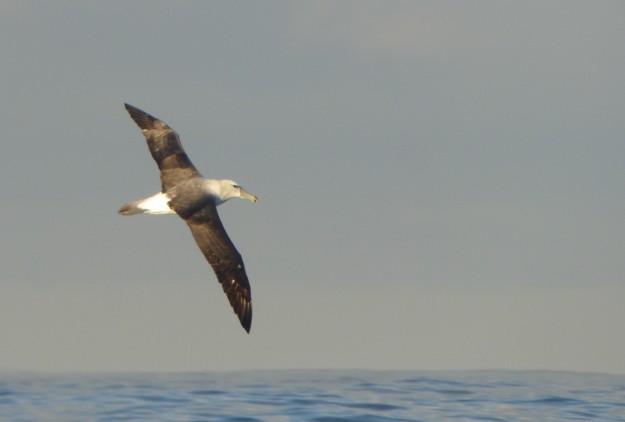
That was a very fortunate encounteer since this species is normally easier to see in the North-east of South Africa. We were just chating about when the captain informed us of some whales around. The boat change the direction from South to West, and a pair of minutes later we were enjoying 2 Humpback Whales right in front of us. Humpback’s are often found around the boundary of the continental platforms, so this was the rights place for them to be. Happy after such a nice sight we turned South to keep exploring the ocean. 3 Shy Albatrosses pointed us the right way, even if they were not really close. We got some 15 minutes of rude sea, and after that the ocean appeared as calmed as the Aegean Sea in a summer day! More White-Chinned Petrels appeared and inmediatly after we got a very close Shy Albatross that landed some metres from our boat. One of the tour participants spotted the first Black-crowned Albatross of the tour while the captain adviced us about 3 Wilsons’s Storm Petrels in the back! Personally, I was concentrated in a majestic Indian Yellow-nosed Albatross coming from the front of the boat. I was enjoying the view when second bird appeared behind, clearly bigger and greyish than the Sooties Shearwaters around. It didn’t take long to see that it was a massive Southern Giant Petrel that came really close to the boat to fly around and stop on the sea. We spent some 10 epic minutes enjoying all of these species. Unfortunately the Wilsons’s Storm Petrel (the only ones of the tour) never came really close but some really close Pintado (Cape) Petrels were a good consolation for all tour participants.
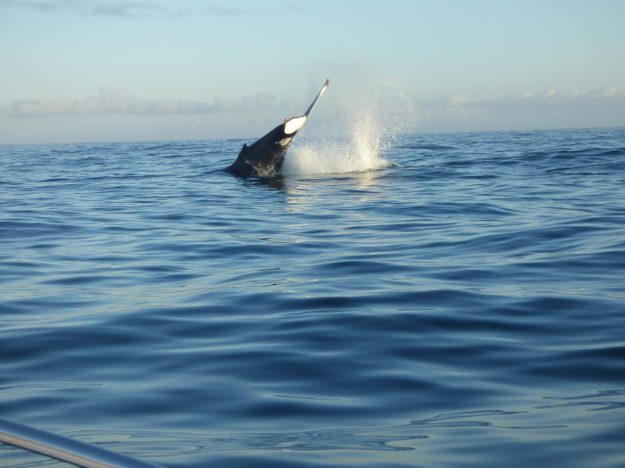
For some time we were having Shy, Black-crowned & Indian Yellow-nosed Albatrosses flying around plus Cape & White-Chinned Petrels passing close to the vessel. We moved half a mile just to explore a bit beyond and there we got a superb Northern Giant Petrel that directly came to our boat to pass by extremely close before stopping and harrasing an Atlantic Yellow-nosed Albratross.
We were all delighted of being so lucky when our captain got a message: a fish carrier was close. These massive boats fish in the deep water South of the Good Hope Cape and can wonder for weeks in large areas of the ocean.
Even 2 miles away from the boat the massive concentration of wildlife was evident. Thousands of sea birds were following it, including all the species that we saw before but also the firsts Cape Gannets of the trip. There were also an important number of South African Fur Seals and tens and tens of Albratrosses of different species. We approached a bit more and a carefully scanning revealed at least two Antarctic Prions, a scarce species that was really celebrated by the tour participants. For some time we were trying to keep track on these small, lovely petrels to try to get some shots, but it was really impossible to get them close in the mess of 100s of Sooty Shearwaters, Cape Gannets, Antarctic Skuas and Albatrosses around.
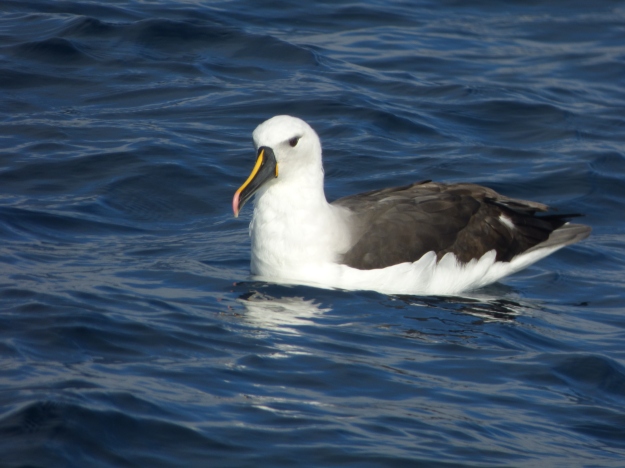
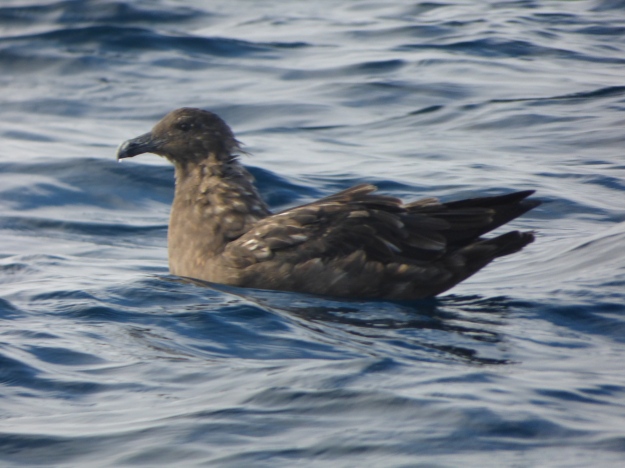

Even when approaching we realise that there were some major species among the long queue of birds following the carriers. And now that we were close we could confirm at least 7 Southern Royal Albatross following the carrier. These authentic giants cover enormous distances to feed. It is known that they can come to Southern Africa to feed for some days from their nesting colonies in New Zealand!
The movement of the birds was constant, with waves and waves of birds getting in and out. And then, along with 3 Southern Royal Albratross we saw at least 2 Northern Royal Albatross, a really scarce species in these trips and something we never expected to see in our tours to South Africa! All tour participants enjoyed good views and photos on the birds, and we were about to go back to Cape Town when a last surprise was still waiting for us: Our captain found 1 Spectacled Petrel just passing by us along with White-Chinneds!! This was the perfect way to start our way back to the coast.
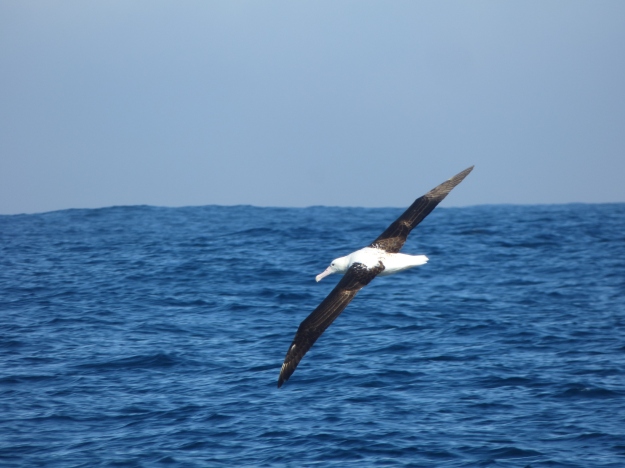
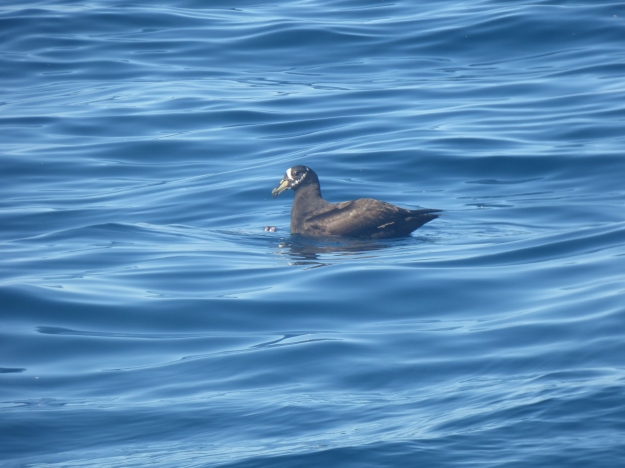
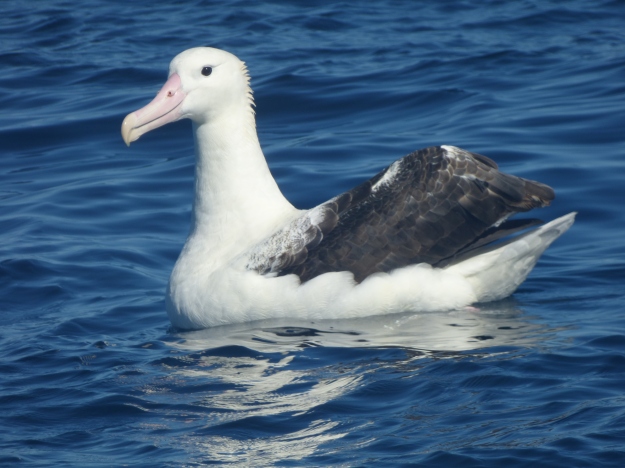
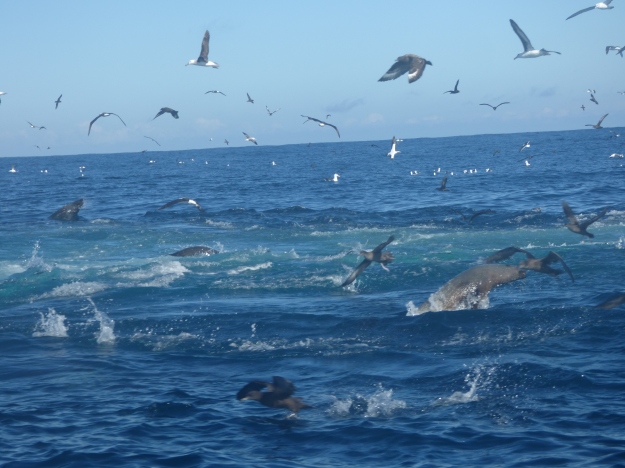
Back in the Bay, we still had a pair of stops to have close views in both Bank & Crowned Cormorants. Both species are endemic to Southern Africa, and globally endangered. We all had good views along with South African Fur Seals having a good sun bath.
Back on ground we had a moment to sit and enjoy some extra meal. The sandwiches on the boat were great, but it was also nice to enjoy some food on the ground, actually! After a passionate chating on seabird conservation efforts, we moved to our next location. Still time to visit two spots, both really close to our accommodation.
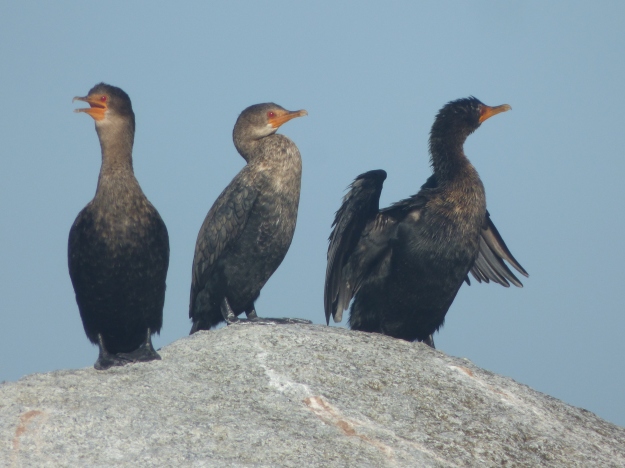
As anyone coming to Cape Town, it is always mandatory to enjoy some one of the African Penguins colonies around the city. African Penguins started to colonise some beaches in the Greater Cape Town about 25 years ago in a natural process of expansion. Our time in the African Penguin colony not only produced excellent views in this highly especialised birds, but also served as a first contact for the group with some common species such as Cape Wagtail, Southern Double-collared Sunbird, Karoo Prinia, Cape Bulbul, African Oystercatcher, Cape Turtle Dove, and Yellow Canary. We also enjoyed good views on Yellow Mongoose and Cape Hyrax, both endemics of Southern Africa and a good adding to our mammal list!
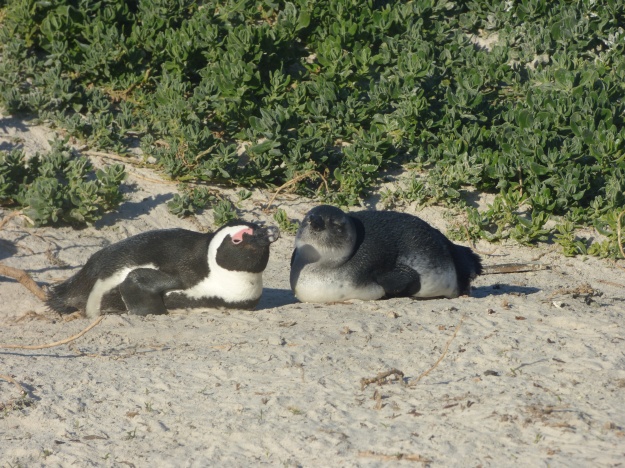
The last stop in this long, intense, and incredible first day was to explore a small marshy patch really close to our accommodation. This small wetland is just under a rocky slope, providing a good mixt of species, from the hills to the reedbeds. A first look in the area allowed us to locate the firsts Blacksmith Lapwing of the tour, feeding in the short grasses around the pond along with 2 Crowned Lapwings. The water level in the pond was surprising low but stil supporting some birds including several Cape Teals, some Yellow-billed Ducks, African Black Duck, 1 Hottentot Teal, Malachite Kingfisher and 2 Red-knobbed Coots; Grey Heron and Little Egret were fishing around while a colony of Cape Weaver were busy preparing the nests. A lovely song came down from the rocky slope and soon were all enjoying a Cape Rock Thrush singing from the small ridge. A bit lower in the slope we found the 2 firsts Cape Spurfowls, while a Common Fiscal was overlooking the area in search of the last prey of the afternoon. The group withdrew to the van, that was parked by some Common Starlings & Red-eyed Doves. Happy after such a great day, we came back to our accommodation for a deserved dinner & rest!
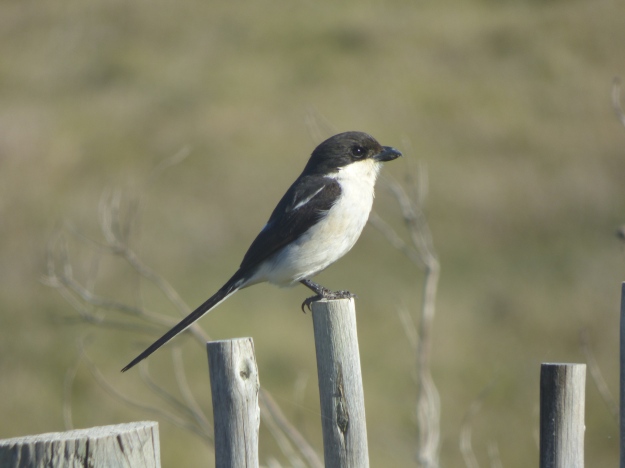
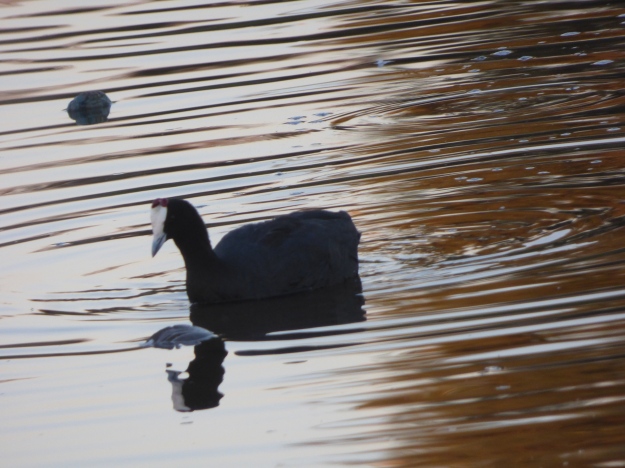
Day 2. The second day of the tour was devoted to explore False Bay Eastern side. Here we were to explore a pair of spots expecting to find some of the specialities living in the famous fynbos and rocky areas around. Always with the Ocean as a background, we first explored a small plain with some rocky outcrops. The group didn’t move from the van when we found the first Cape Grassbird of the tour, along with Red-winged Starlings and a gorgeous male Orange-breasted Sunbird. Great start! In front of us, a short walk along a beautiful, open fynbos with a large rocky slope to the left, that soon produced Cape Bunting, Fiscal Flycatcher, Cloud, Zitting & Pipping Cisticolas (or Neddicky, its wonderful local name), Greater Double-collared Sunbird, Yellow Bishop, and some Cape White-eyes. A pair of White-necked Ravens provided excellent views both in flight and on the ground.
The morning had been sunny and warm until that far, until a cold fog came front the Ocean. We kept on for a further exploration revealing one of the main targets of the stop, as after some scanning we located a Ground Woodpecker perched on a rock. We all enjoy great views on what soon turned up into two individuals. They were really active, moving from a pair of big boulders to the ground to feed, and then back to the boulder to rest. This is a endemic species of woodpecker living in areas without trees. They nest on banks, where they do excavate a tunnel as a kind of bizarre Kingfisher. As we were enjoying the bird, the only one Cape Siskin of the tour just flew over and stopped for some time in a dead branch! This is another endemic, and sometimes a hard target!!
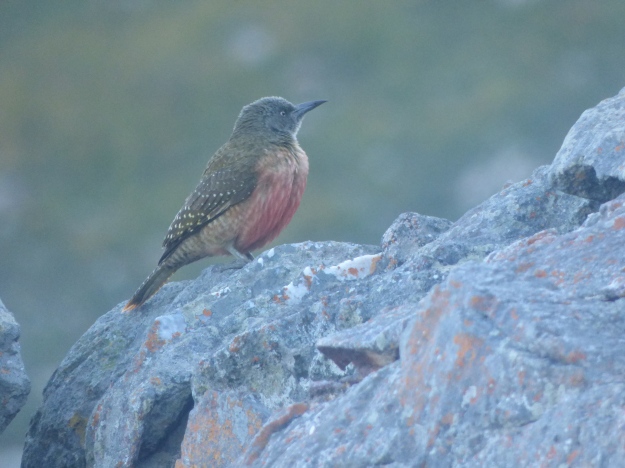
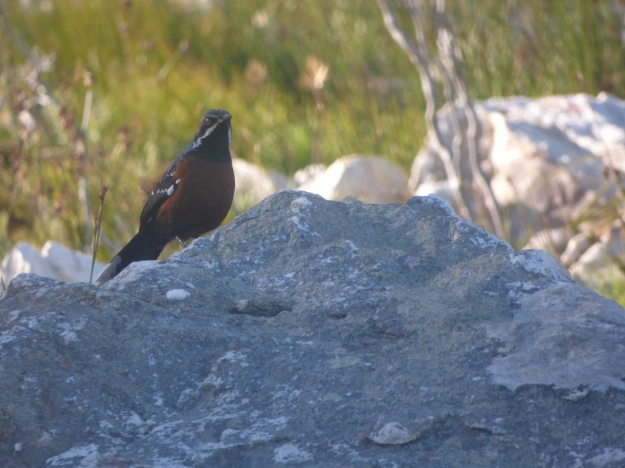
We were clearly in the good way. A pair of Rock Kestrels came to the sky just by the time that a Sentinel Rock Thrush started singing. It was being a great morning, but even improved when a whistle came from the slope. It took us quite a lot of scanning but we finally found out 2 Cape Rockjumpers moving on the grouns while calling each other. We could enjoy over 5 minutes of these birds moving in the slope, appearing and disappearing in the rocks. Mid way beetwen a Wallcreeper and Roadrunner, these birds are really worth to see!!
Back into the car, we had a short drive until our next stop, a small Botanical Garden by the hills carpeted with fynbos. In here we had a first contact with common species living in woodlands or tall scrubs such as Olive Thrush, Southern Masked Weaver, Laughing Dove, Brimstone Canary, Cape Robin Chat but also enjoyed great views in a small flock of Swee Waxbills and the only views on Cape Sugarbid and Blue-Mantled Crested Flycatcher of the trip!
Glad after this great morning, we had a small lunch break in a lovely road restaurant. After enjoying some local cuisine, we still had one stop before driving back to Cape Town. A close coastal wetland provided us with a different set of species. The wetland is surrounded by a rich grassland where we enjoyed Cape Spurfowl, African Pipit, Plain-throated Martin, African Stonechat, Bokmakierie and Jackal Buzzard.
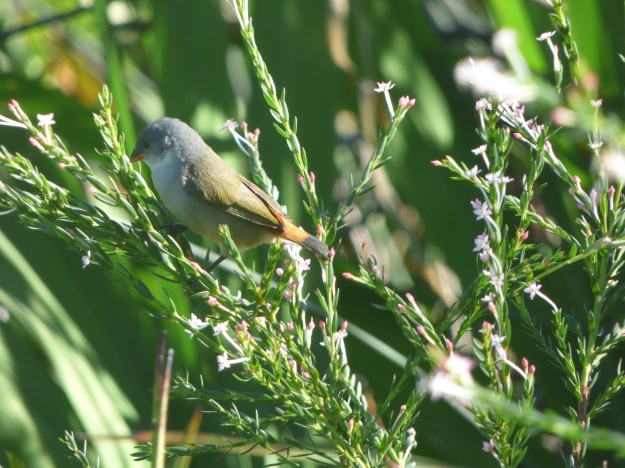
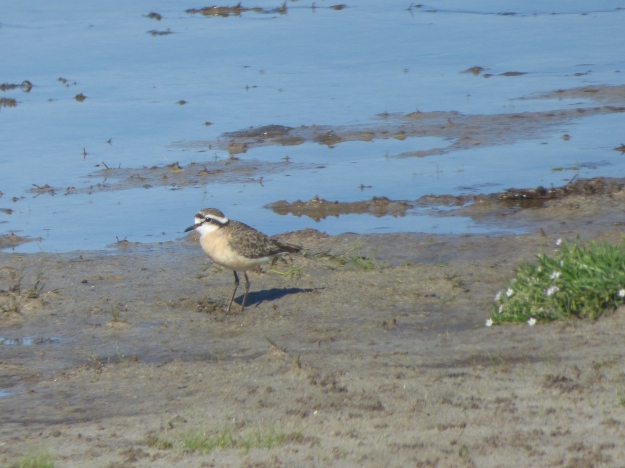
Once in the marshy area, a general look into the area revealed large flocks of Hartlaub’s Gulls roosting in different islands and, along with them, a small flock of 3 Antarctic Terns. This is again a scarce species so we were really glad to enjoy them.
The vast salt lagoons and marshes were also having small flocks of Kittlitz’s Plovers as well as several Greater Flamingoes and Pied Avocets. A distant juvenile African Fish Eagle being harrased by a African Marsh Harrier female was also a great sight, Back in the car park, our 3 firsts Levaillant’s Cisticolas were singing around, allowing good views.
It was time to go back to Cape Town, were we would spend the rest of the afternoon enjoying the wonderful False Bay Nature Reserve. Due to a traffic jump, we did arrive to the False Bay NR a bit later than expected. Despite that, the birding was stunning. In the lagoons around it was a complete set of the ducks living in the area including several Cape Teals & Shovelers, Yellow-billed Ducks, Red-billed Teals plus the most sought-after species: Southern Pochards (30+) and Maccoa Ducks (12+). We also got two flying Spur-winged Geese, a Purple Heron plus flocks of Cattle Egrets and Glossy Ibises. The ponds were also having small numbers of Little, Black-necked and Great Crested Grebes, all of them with nesting populations in the tip of Africa.
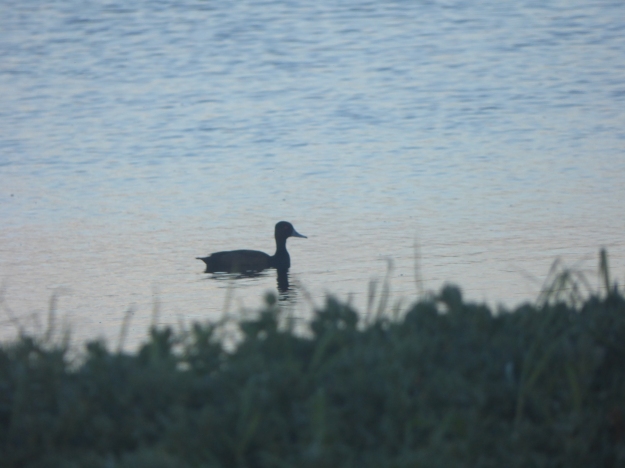
A short walk around provided first views on Black-shoulded Kite and the endemics Grey-winged Francolin & Cape Sparrow. It was some gorgeous patches of reedbeds, and there we found our only 3 African Swamphens of the tour along with Black Crakes, a nice Little Bittern (African race), Lesser Swamp Warblers and flocks of the very soiny Little Rush Warbler. A really sought-after African Rail called a pair of times but, despite our hopes, never appeared in the out…
It was already time to go back to the car. Pied Kingfishers and Great White Egrets were hurring to catch a last fish when we discovered a small flock of Spotted Thick-knees in a plouged area. Back to car, we still had at least one more African Rail calling… No time for more, time to enjoy a nice local wine and have some dinner!
Day 3. The weather became stormy during the last evening, and during the whole night we were having a heavy rain in Cape Town. This day we were supposed to spend most of the day in Kirstenbosch National Botanical Garden. When we did arrive the weather was even worst, with some strong wind. So we did a second coffee and wait for some time. After some wait we managed to spend 90 minutes of birding in Gardens, always with some rain and poor visibility. Still, we got good views in 2 Sombre Greenbuls, Common Chaffinches (introduced here by the British), Cape Batis, 4 Forest Canaries, Familiar Chats, 1 flyby Lemon Dove and several Cape Robin-chats. A lovely Knysna Warbler was singing in the undergowth but despite our efforts it was not possible to see this elusive bird. So, after some time in the gardens, it was clear that the weather was not going to improve so we decided to start moving to our next area to explore.
But before we could enjoy 2 Spotted Eagle Owls roosting in one of the largest trees in the Botanical Garden! It was really a pity that we had to cancel the wonderful walk we had in mind.
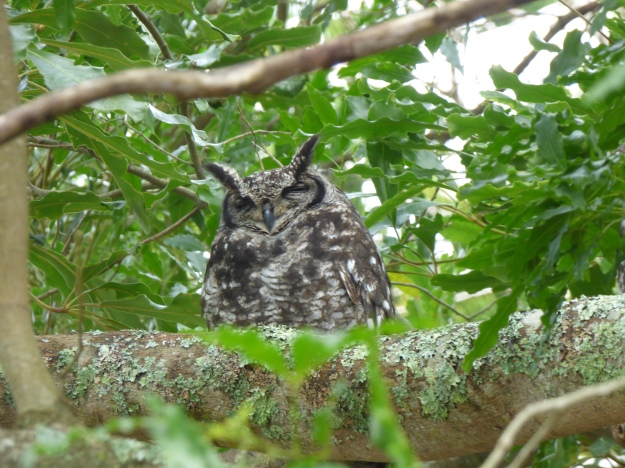
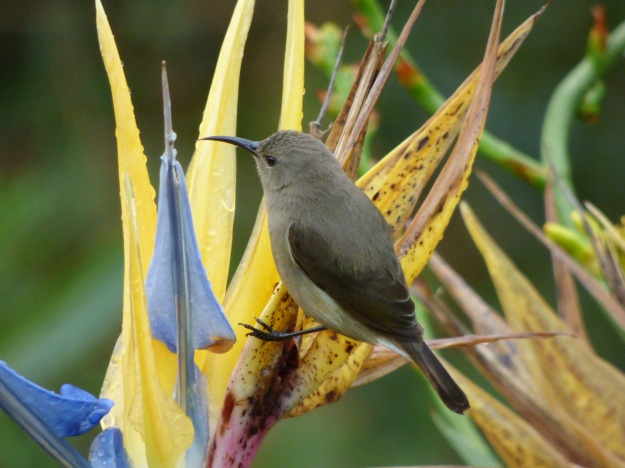
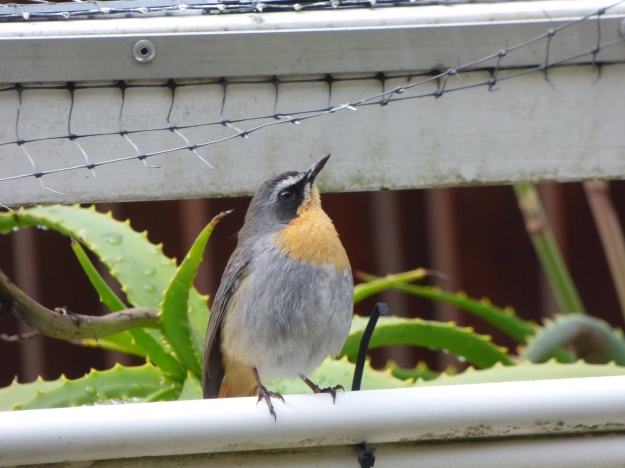
The rain was still heavy, so we moved a bit earlier than expected to the West Coast National Park, a coastal area inmeadiatly North of town. The weather in that area was clearly better, with only some high clouds and a really comfortable temperature. Our first stop was to do a walk in a small open area. Here, with the dense scrubland surrounding the dense scrubland, we had first views on really common species living in this dry fynbos such as Karoo Scrub Robin, Bokmakierie, Karoo Prinia and Grey-backed Cisticola. A short walk around also produced Speckled & Red-faced Mousebirds, Chestnut-vented Tit-Babbler, African Hoopoe, Ant-eating Chat and Cape Clapper & Karoo Larks. Small herds of Bontebock and Eland were feeding along with Common Ostriches and flocks of Pied & Wattling Starlings. This was a really enjoyable place but time was running and we had to check a different corner.

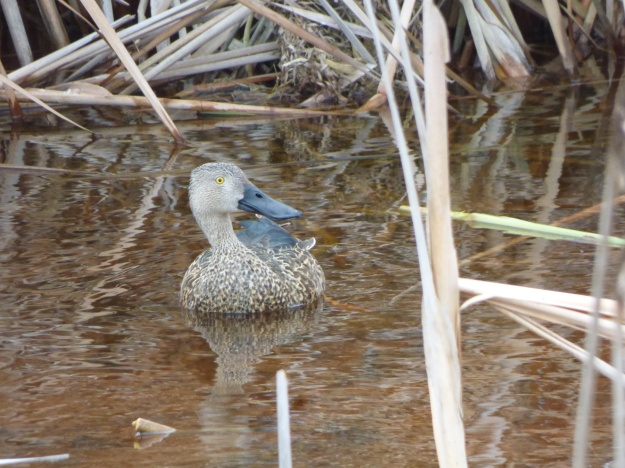
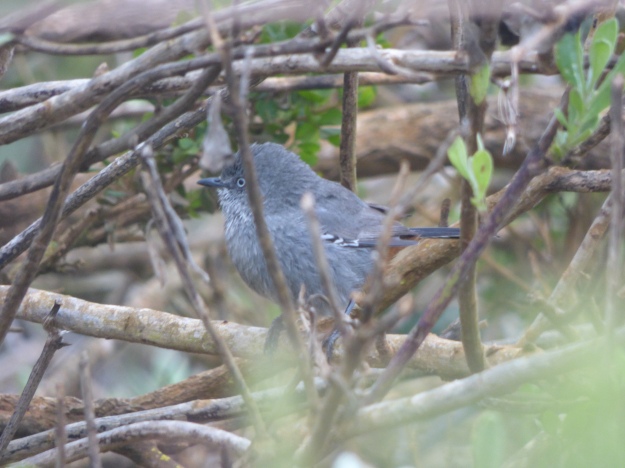
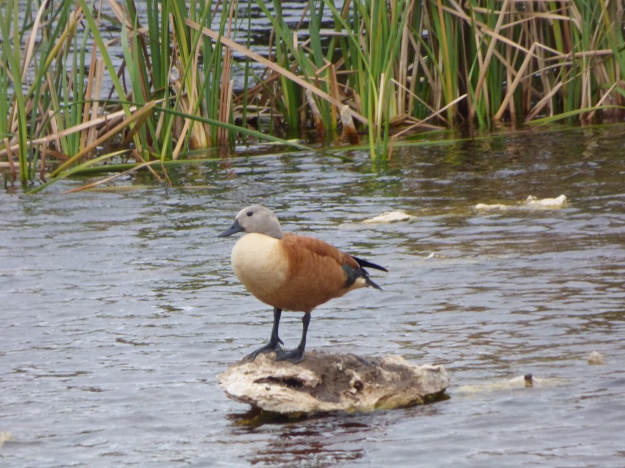
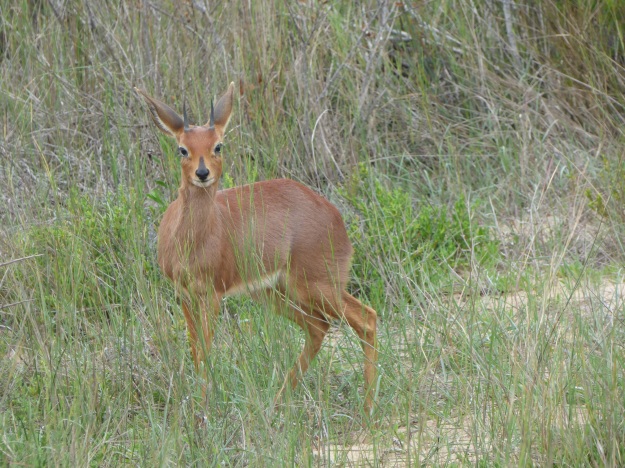
A small pond in the middle of the karoo beyond provided with other interesting birdlife. Here we got Black Crake, 2 Cape Shovelers and Little Rush Warblers while a small flock of Common Waxbills were drinking water. In the short walk to pond we got the first of many Black Harriers flying over the karoo in a majestic image. In the water, a pair of the endemic South African Shelducks were really celebrated. But the best was to come. After a while checking the pond, a call came from the swamp, barely few metres from us; a Red-chested Flufftail! No movements allowed and after a pair of minutes of wait, a Flufftail just runned in front of us!! Great!! In the way to car we still enjoyed more Black Harriers but it was already a bit late so we drove to our accommodation close to the National Park but we still had a last stop in an open area close to the B&B, where good views on 2 Fiery-necked Nightjars flying around, singing and performing a beautiful display!
Glad after this wet but incredible day, we had a good dinner and better rest.
Day 3. Early morning breakfast in our small sea-side accommodation, overlooking the Atlantic Ocean from a small cliff. This day was calm and bright but it was a ruff sea out there! From our terrace we enjoyed some Rock Martins flying around but also sometime far more special. Distant in the sea we got at least two Southern Right Whales breathing under the waves. Not every day you enjoy some whales while having your first coffee!
After breakfast we went back to the North Coast National Park, to concentrate in a walk in the limit of the dense fynbos and a large grassy patch. The karoo was full of birdlife and we enjoy great views on Levaillant’s Cisticolas, Karoo Larks, Karoo Scrub Robins singing. The walk was extremelly productive. In a short time we got all 3 species of Mousebirds living here: Red-faced, Speckled and the endemic White-backed). Temperature was extremely pleasant and that favour small birds to show including Protea Canary, Bar-throated Apalis, a gorgeous Malachite Sunbird displaying and the really sought-after Layard’s-Tit Babbler in a great view at short range!
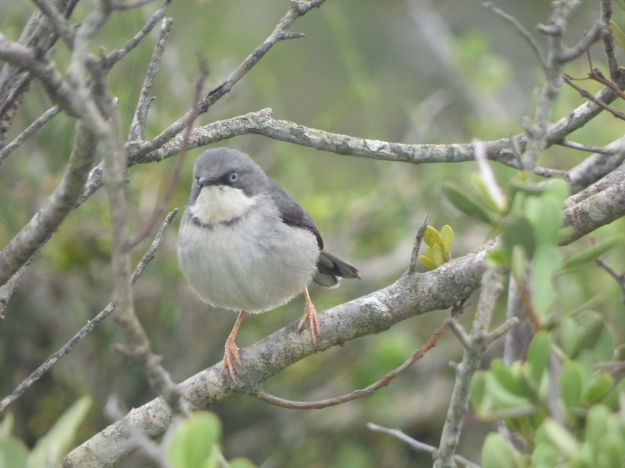
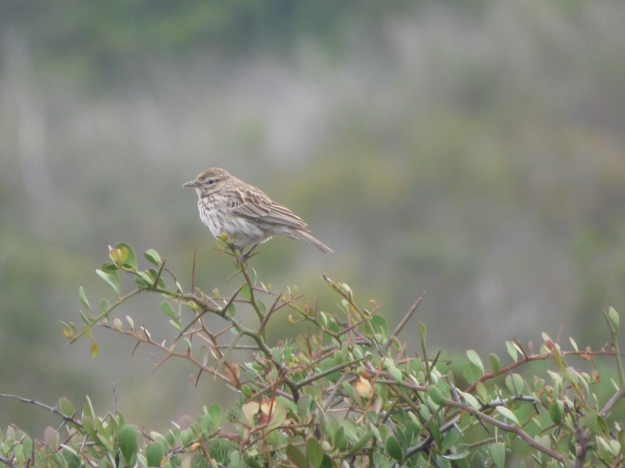

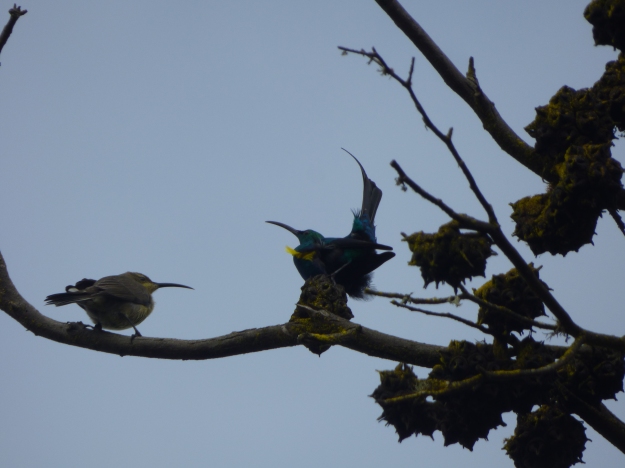
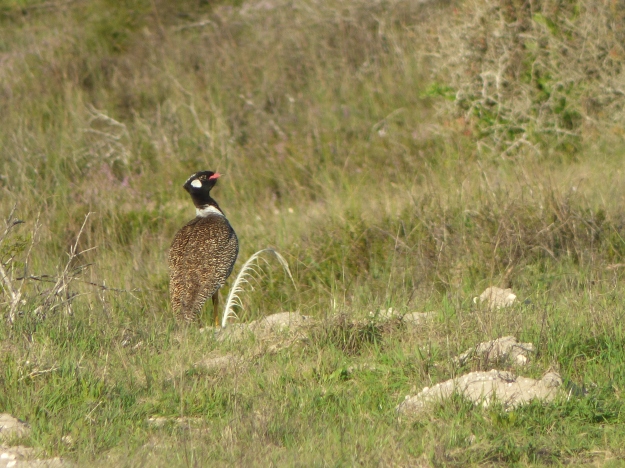
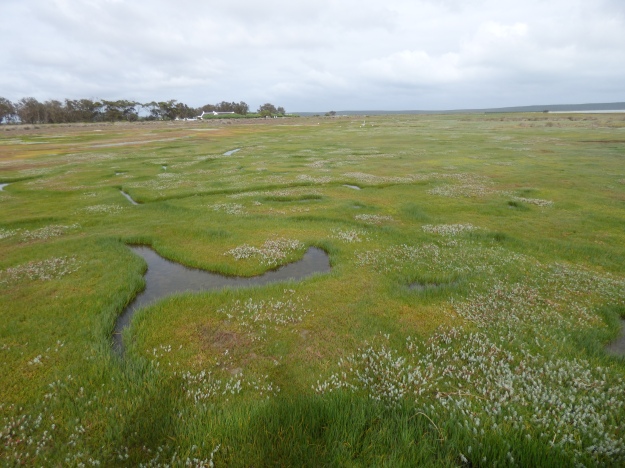

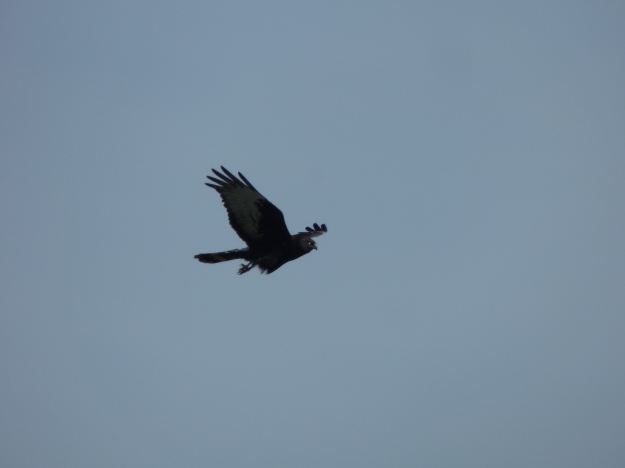
Once inside the grasslands, we enjoyed the songs of Bokmakierie mixing with the ones from Cape Longclaws and Cloud Cisticolas singing in flight, with a small herds of Elands feeding here and there, and Common Ostriches suddenly appearing from the karoo. An close, explosive song announced the first Southern Black Koorhan of the tour. This is another really sought-after endemic!
We were really lucky as the Koorhan was lekking close to us for some time, and all tour participants had amazing views on this bird. A further scanning soon reavealed some Cape Spurfowl (they had been noisy the whole morning) but also a flock of its more scarce relative, the Grey-winged Francolin, feeding by the end of the grass. A Cape Capped Lark just flew from our feet at the same moment that one of the tour participants found the first pair of Blue Cranes of the tour! What an amazing birds… The birds in this area look like endless! An African Hoopoe showed up in a dead tree, and soon was joined by a different bird; a lovely Acacia Pied Barbet!
Our next stop was to explore a shore of the main lagoon in the National Park. This big lagoon, mainly salty, has several patches of reedbeds due to small springs coming from the subsoil. Here we got lovely views in both Greater and Lesser Flamingoes but also Hadeda Ibises, several Black-winged Stilts and Pied Avocet plus close views on a pair of Cape Longclaw nesting in the grass by the path. Here we also got Cape Teals, Crowned Lapwings and our only one Common Sandpiper of the tour. Among the several Cape Wagtails we were greeted with a Yellow Wagtail, a rather unexpected sight!
The lagoon itself was having some waders including Eurasian Curlews, Grey Plovers, Bar-tailed Godwits, Eurasian Whimbrels, Greenshanks, Common Ringed Plovers, Dunlins and 20+ Curlew Sandpipers. But probably most eyes were concentrated in some close African Oystercatchers. Around the bank we had some Western Reef Egrets and Grey Herons but also 1 Squacco Heron and Purple Heron. In the distance, we enjoyed 7 White-fronted Plovers moving along 2 Wood Sandpipers. Flocks of Great White Pelicans were moving over the lagoon, towards the depeer areas, mixing with the many Caspian & Gull-billed Terns that were pratolling it. In this location we also got 1 Black-tailed Goodwit, a really scarce species in the area…A really good bird for South Africa with most of the locations concentrated in this same lagoon!!!
Back to the fynbos, we headed to our next stop. We did some haults in the way to enjoy some Bonteboks appearing here and there. This beautiful antelopes were really close to extinction and by 1830 only 22 remained. Black Harriers were also stopping our way as we got not less than 6 of them in a short drive, including some close views. Once parked, we did a short walk in the area, a dry fynbos with some sandy open areas, and we soon had excellent views on our main goal, a Cape Long-billed Lark moving in the open area. But this corner was about to produce a bigger surprise. A small flock of birds was moving, mainly Southern Double-collared Sunbirds, but it also appeared our only Grey Tit of the tour, another sought-after endemic. And when we were about to go back to our van, a wonderful male Dusky Sunbird appeared in the vegetation to provide us with a short, but terrific view! This species, is normally referred to live in Northern areas, but it has been expanding the range in recent years.
We then had a stop for our picnic enjoying some great views on the central lagoon, with large flocks of Cape Cormorants getting in and out from the sea. For us it was time to leave this National Park and drive inland to the karoo areas. The 90 minutes long drive proved to be extremelly productive. Along with several large flocks of Southern Red Bishop along the way, we had two stops in our way. Still close to the coast, we spend some time in a farm land, where we found several African Pipits, at least 2 Nicholson’s Pipits (a recent split from Long-billed Pipit due partly to allopatric distributions and sedentary habits of both populations) along with them, 3 Capped Wheatears, some Red-capped Larks and Malachite Sunbirds.
Next stop was already close to Ceres. Here, close to a mountain pass, we were surprised by 2 magnificient Verreaux’s Eagles and joined in the sky by 1 Peregrine Falcon. Here we also had first views for the tour on Alpine & African Black Swifts flying low at incredible speed!

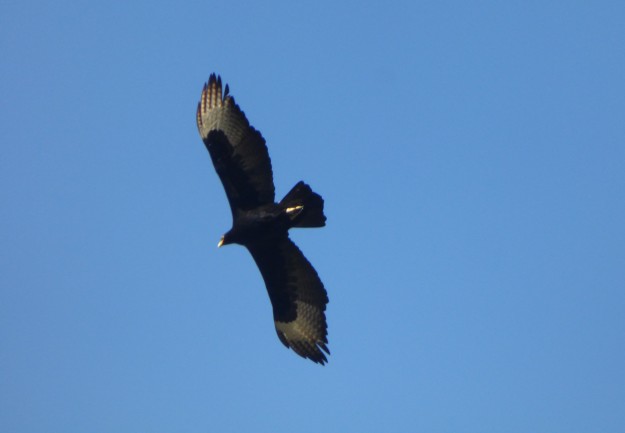
Beyond Ceres and the hills around, the landscape faces a dramatic change. An inmense desertic plain extends in an endless way. This is the karoo, an incredible ecosystem for wildlife, and especially for birds. Due to the limitations of time in this pre-tour, we only had some hours in the afternoon to explore the area. In future tours, we will dedicate one day and a half to explore this amazing place!
Even with our limited time, we can say that we did pretty well. A first stop in a small valley surrounded by mild bushy hills produced a number of goodies. Here we enjoyed more endemics such as Cape Penduline Tit, Chestnut-vented Tit-Babbler, Long-billed Crombec, Mountain Wheatear and Karoo Thrush. But probably the most celebrated bird in this stop was a wonderful male Black-headed Canary superbly perched in a small reedbed. Unfortunately the bird didn’t stay there for long before it came back to the plains beyond the small valley.
During the next hour, a combination of road birding and some selected stops provided with some good addings like Lark-like Bunting, Rufous-eared Warbler, Grey-backed Cisticola, Fairy Flycatcher, Karoo Chat and larks including Large-billed, Karoo Long-billed & Karoo Larks. A last stop was made in a dry stream and there we could enjoy good views on 1 male of the also endemic Namaqua Warbler that was singing in a really active way.
After such a nice (but unfortunately rather short) exploration of the karoo, we drove to our next accommodation beside Bontebok National Park, where we did arrive a bit beyond sunset.
Day 4. Bontebok NP & De Hoop Nature Reserve After a nice breakfast we drove the few miles into Bontebok NP, a small but really interesting protected area. Here we spent 3 hours in the morning, that were really productive! & De Hoop Nature Reserve. Some drive into the reserve produced excellent views on Bontebok, Cape Mountain Zebra, Grey Rhebok and Red Hartebeest.
A fast scan in the grasslands of the park from an advantage point produced the first of several Denham’s Bustards during the morning. Here we had some Red-capped Larks singing and we were surprised by a Secretary Bird flying over us, stopping in the grasslands and feeding not far from Denham’s. A further stop to enjoy some distant Cape Mountain Zebras was even more surprising since we found a Karoo Korhaan just beyond them, moving in the tall grass!
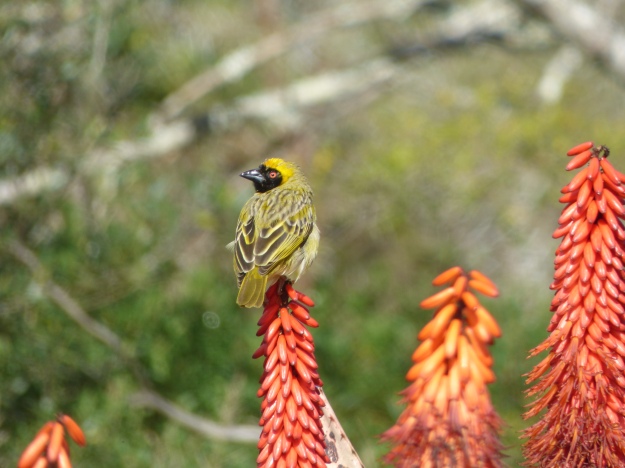
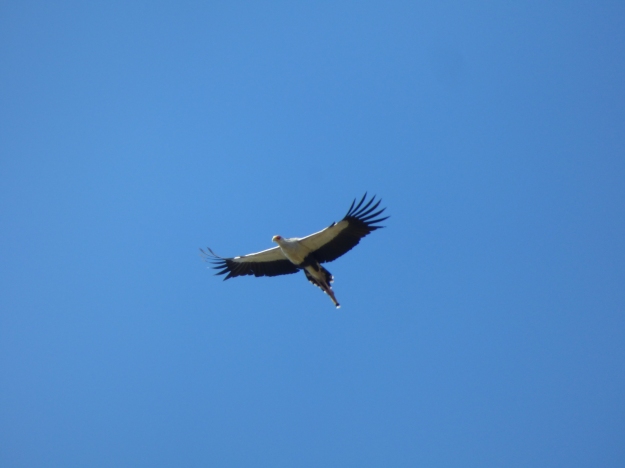
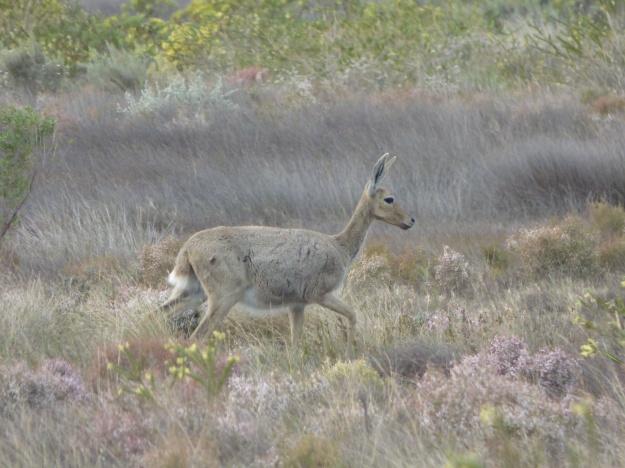
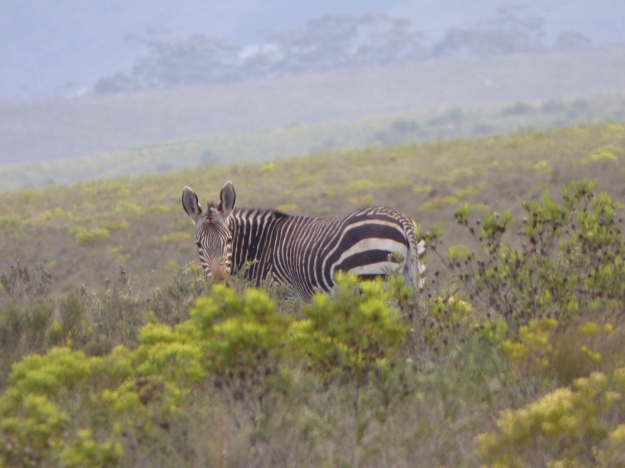
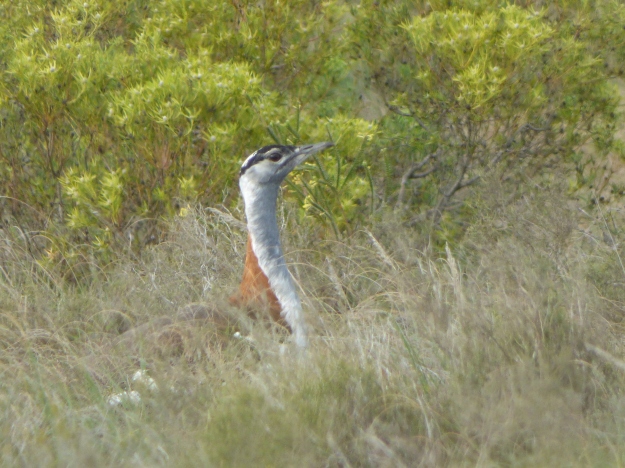

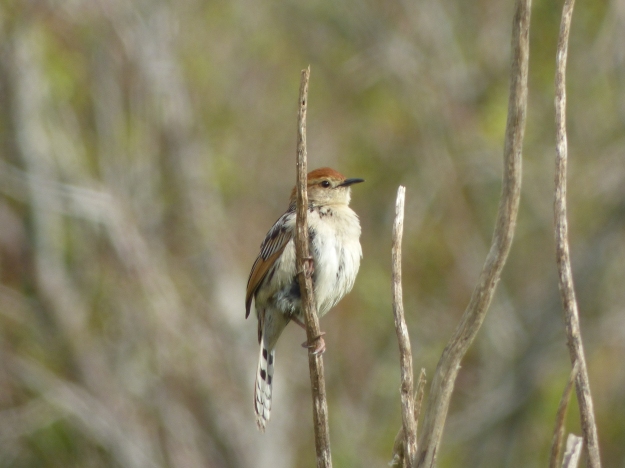
We still some more time driving in the area, adding 2 Southern Black Korhaans displaying and 1 rather unexpected Rufous-breasted Sparrowhawk going for Levaillant’s Cisticolas in the grasslands. After this driving we explored the evergreen vegetation along the Breerivier. Here we got excellent views on Southern Tchagra, Bokmakierie, Pied Acacia Barbet, Brown-hooded Kingfisher, White-backed Mousebird, Bar-breasted Apalis, Sombre Greenbul, Cape Grassbird, Greater-double Collared Sunbird & Pin-tailed Whydah among many others.
We enjoyed a nice picnic by the Breerivier before driving to the coast for an afternoon exploration of the De Hoop Natural Reserve. In the between both natural sites we enjoyed many flocks of Blue Cranes feeding on the farming areas, many times around the water holes but most of the times feeding in the fields, many times really close to the lane. Along with them several Capped Wheatears and African Pipits. Here we also enjoyed a pair of small flocks of Grey-backed Sparrow-Lark. Surprinsigly the only sight of the species during the tour. Around the ponds there were plenty of Egyptian Geese and Spur-winged Geese.
Once we arrived to De Hoop Natural Reserve we didn’t have to wait long until we got our first good bird since we had a stop by the lane to enjoy a small flock of Cape Vultures feeding in a carrion! Cape Vulture is an endemic species with decreasing populations. In Western Cape there is only one colony left, inside the De Hoop Natural Reserve. There were 8 birds and we even were granted with a massive Martial Eagle joining them in the carrion!
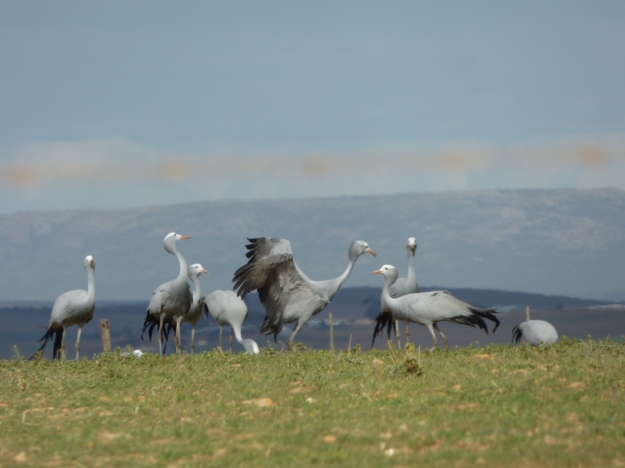
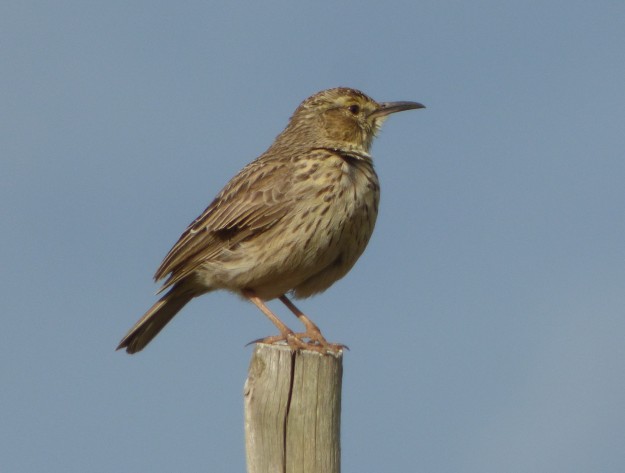
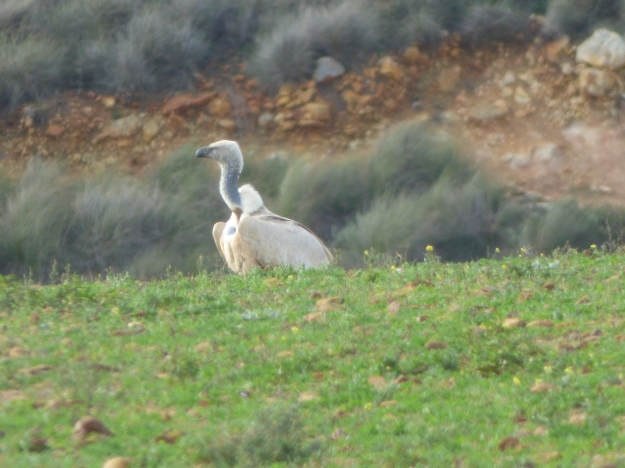
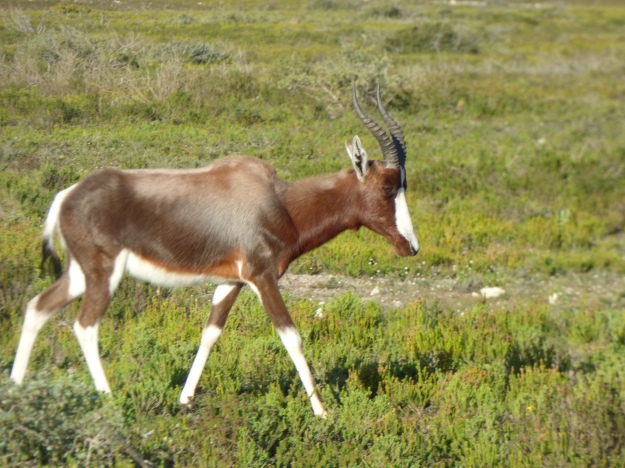
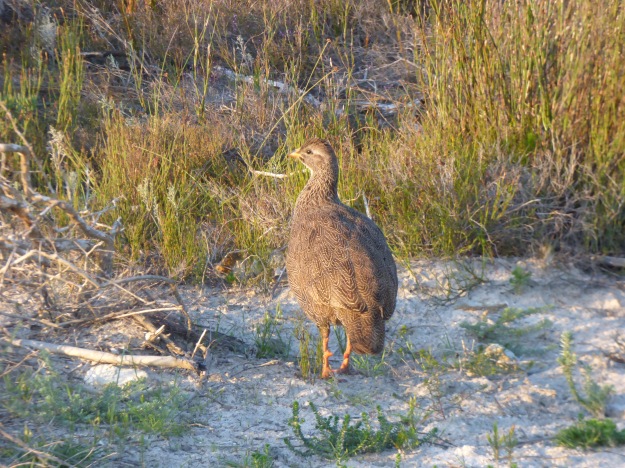
We went throught grasslands and fynbos with scattered herds of Elands, Bontebok and Red Hartebeest while driving towards the sea. In our way we got good views in a number of birds but nothing really special out of 2 Southern Black Korhaan displaying. Once by the ocean, we concentrate in locating the main goal for the late afternoon; to find some whales.
All the coast East from Cape Town has become really famous since host good densities of Southern Right Whales that come here from June to December. The can be seen all along the coast but there are some areas wheere the whales can come especially close to the coast.
After some scanning enjoying African Oystercatchers, Antarctic Skuas and Kelp Gulls we were able to locate up to 3 Southern Right Whales, two of them really close to the beach. It was a female and her calf that spent half an hour feeding and playing only 40 metres away from the sandy beach!
We were lucky and could enjoy the whales for long before driving to our accommodation in the De Hoop Natural Reserve.
Day 5. Knysna & Garden Route. This day we drove East to explore the famous Garden Route and its impressive montane broad-leave forests, the Southernmost of the Afromontane ecoregion! This can be considered as a small adding for our clients that year, and something not planned to do in futures issues of the tour, since we will broadly cover this ecosystem in our main tour exploring South Africa.
After leaving Bontebok early in the morning, we drove for a pair of hours until the Garden Route. During the way we had some nice birds as we got some Black Saw-wings here and there, and some Forest Buzzards along the way. Even some miles before arriving to Knysna the change in the habitat is evident with some wonderful corners covered by a gorgeous broad-leave forests and large Yellowwoods (Afrocarpus & Podocarpus) just by the road.
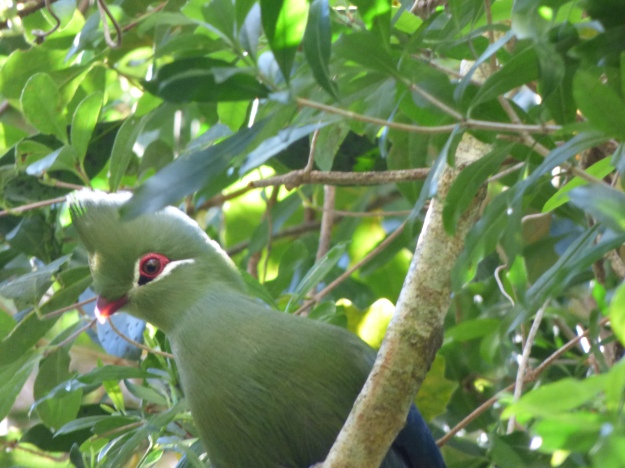
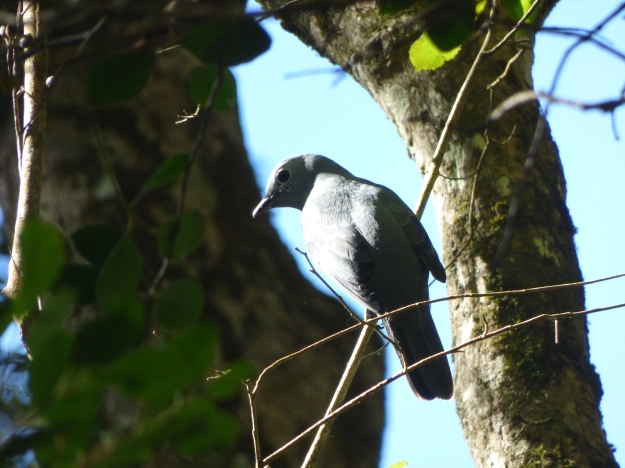
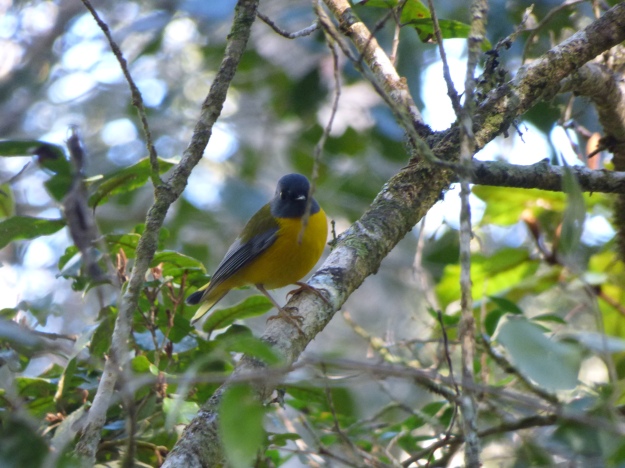

Our first stop in the morning was a short walk North of town. In a 90 minutes short-walk we enjoyed a good number of specialities including large flocks of Yellow-throated Woodland Warbler normally joined by some Cape Batises. Terrestrial Brownbuls & Sombre Greenbuls were also common and their calls filled the moist atmosphere. After some walk we were granted with great views on one of the targets that morning, as a Chorister Robin-Chat showed up by the path; a bird that was really celebrated for everybody in the group. Some monumental trees were along the path, with some Outeniqua Yellowwood (Afrocarpus falcatus) growing above 40 metres tall!
More and more Yellow-throated Woodland Warblers were showing in mixed flocks with Cape White-eyes and lovely Collared Sunbirds, but not far from one of these flocks we got 2 Southern Black Tits, the only ones during the tour! With little time to enjoy them as they were moving fast, a superb Grey Cuckooshrike appeared from the undergrowth to show superbly for a couple of minutes while moving in the branches. But the most celebrated species in this stop was the Knysna Turaco, another beautiful South African endemic. In our way back to the van we still enjoyed great views in 1 male White-starred Robin while moving in the low strate of the forest.
After a short driving we arrived to the second spot to explore the moist forest. A lovely path that partially runs along a small stream. Here we got some good birds even before getting in the forest. In a clearing by the van, some Amethyst Sunbirds were feeding around us. Once inside the forest, we were surprised by the 2 Lemon Doves taking off at close range. The birds flew into the forest and took us really long to relocate them! Some Knysna Turacos appeared in the while, and provided again excellent views. Some Red-billed Wood-Hoopooes were also moving high in the canopies. After such a nice start we decided to walk a bit more. Activity was low but we were granted by finding a lovely Knysna Dwarf Cameleon in the path!!!
Happy after such a great finding we kept a bit more inside the forest. And we were granted with some nice birds, at the end! A small flock of Black-headed Orioles were moving up the trees, calling and singing and we got nice views on them. Suddenly, a Greater Honeyguide appeared right in front of us, while a Klaas’ Cuckoo was calling deep in the forest. We moved a bit closer to the Cuckoo and then the Orioles started to move, and along with them we got 3 Grey Cuckooshrikes, 1 Olive Woodpecker and 1 Scaly-throated Honeyguide!

After some lunch we drove some miles to a salty wetland to look for different specialities. Here, our main target was the rather scarce Chestnut-banded Plover. And after some scanning we found at least 14 of them feeding in the salty marshes. The area was plenty of Curlew Sandpipers and Pied Avocets, and some Little Stints were also present.
Lesser & Greater Flamingoes provided gorgeous views in sunset light. Here and in the fresh water lagoons around we got good views on African Spoonbills, Whiskered Terns and the only Goliath Heron of the tour!
Day 6. Garden Route – Cape Town. Last morning of birding around the Garden Route. This time we choosed an open land with some old trees. The landscapes resembles the acacia thornbush even if the forest is really close. The area proved to be extremely productive!
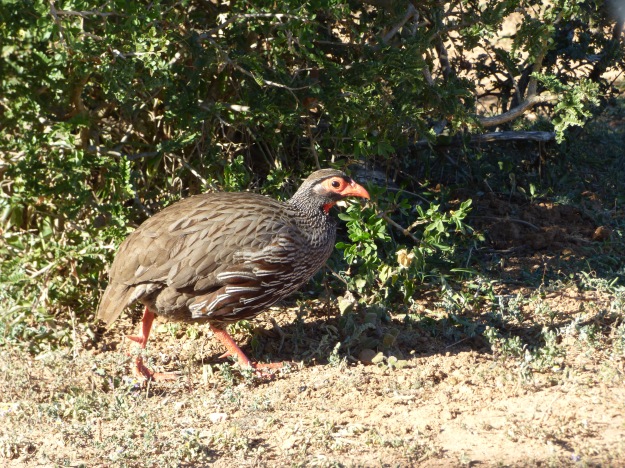
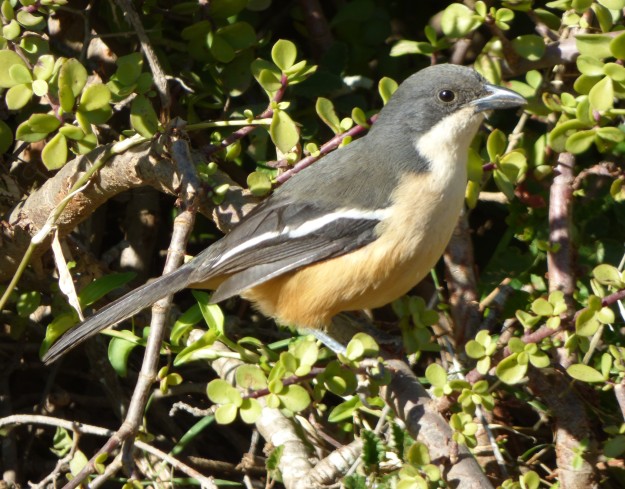
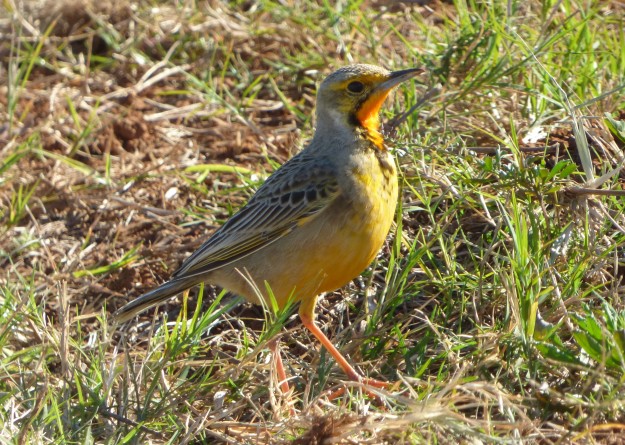
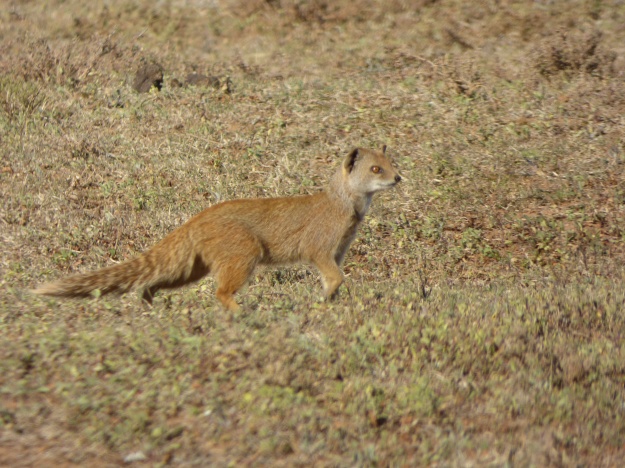
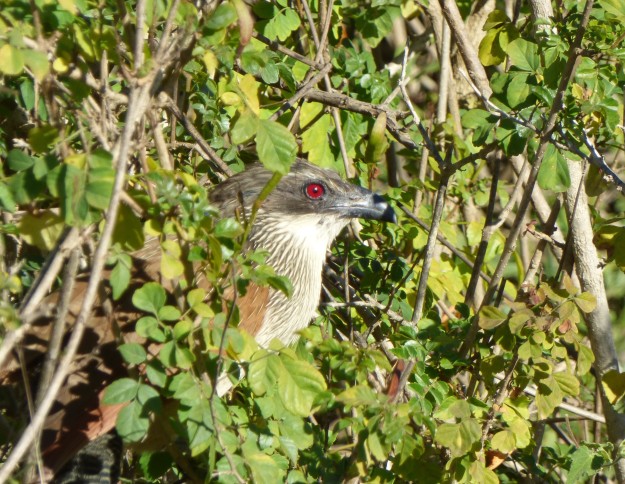
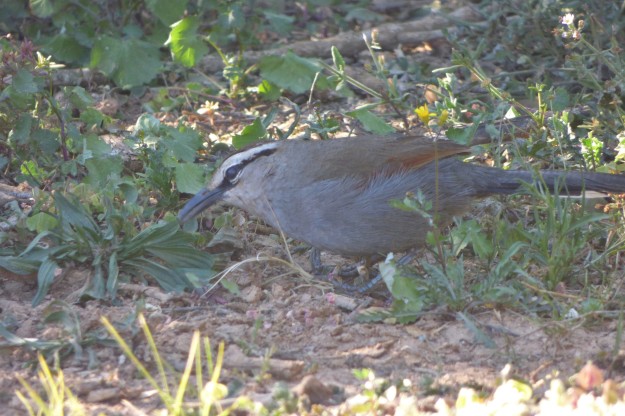
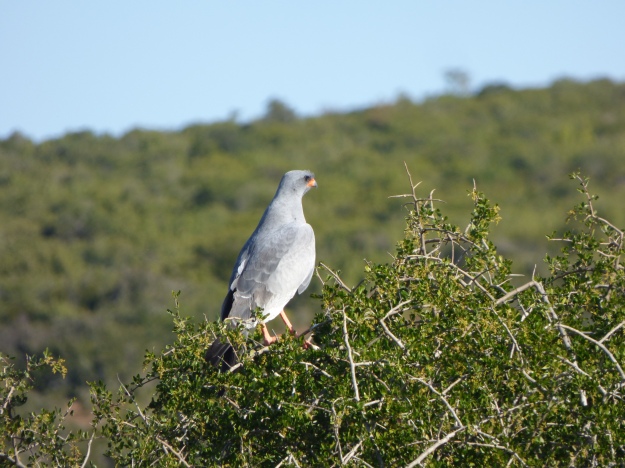
We enjoyed a good mixed of open land, woodland & scrubby areas. Emerald-Spotted Dove, Fork-tailrd Drongo, Yellow Weaver, Brown-hooded Kingfisher, Southern Boubou, Pale Chanting Goshawk, Burchell’s Coucal, Cape Longclaw, Red-necked Spurfowl, African Hoopoe, Southern Tchagra and Capy Glossy Starling to name a few, but the most celebrated bird of the last morning of the tour was the Knysna Woodpecker, again an endemic with a small range that appeared after a long scanning in a open woodland by the savannah open space
Really happy to enjoy all of these birds, we started the drive back to Cape Town where evening flights were waiting for all the tour participants, and the guides!
Please, take an eye to all our birding tours here: Barcelona Birding Point
Thanks for reading us!
